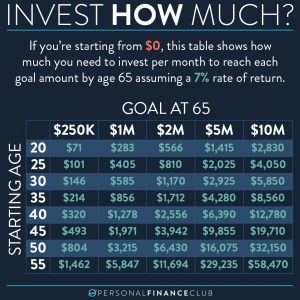
Fidelity famously declared victory in the expense ratio wars last year when they released four zero fee index funds:
- FZROX: Fidelity® ZERO Total Market Index Fund
- FNILX: Fidelity® ZERO Large Cap Index Fund
- FZIPX: Fidelity® ZERO Extended Market Index Fund
- FZILX: Fidelity® ZERO International Index Fund
The exploding popularity of low fee index index funds in recent years have been putting pressure on brokerages to push their index fund expense ratios even lower. Here’s a look at a US total market index fund from each of the three major discount brokerages:
| Brokerage | Ticker | # Stocks | Net Assets | Expense Ratio |
| Vanguard | VTSAX | 3,560 | $813.5 B | 0.04% |
| Schwab | SWTSX | 3,075 | $10.0 B | 0.03% |
| Fidelity | FSKAX | 3,454 | $46.5 B | 0.015% |
| Fidelity | FZROX | 2,530 | $3.8 B | 0% |
On the surface, the new Fidelity® ZERO Total Market Index Fund looks like it just won the war as best US total market index fund. Sure it has fewer stocks, but I’m sure it tracks plenty close to the market, will improve as the assets grow, and the low expense ratio more than makes up for it. But hidden inside these new index funds is a dirty little secret. Take a look at their dividend distribution schedule.
| Brokerage | Ticker | Dividend Schedule |
| Vanguard | VTSAX | Quarterly (March, June, September, December) |
| Schwab | SWTSX | Annually (December) |
| Fidelity | FSKAX | Semi-Annually (April, December) |
| Fidelity | FZROX | Annually (December) |
Vanguard’s VTSAX stands alone as the only one of the bunch to distribute dividends quarterly. That means FZROX (and SWTSX) are sitting on dividends for up to a year before releasing that cash to the investor. Dividends make up an important part of the growth of a fund when reinvested. The opportunity cost of reinvesting those dividends annually instead of quarterly turns out to be (relatively) expensive.
UPDATE: While FZROX does only pay dividends annually, the conclusion below is largely incorrect. FZROX actually reinvests those dividends internally to the fund throughout the year, and the growth is reflected in the share price. (You can see this because on the day the dividends are paid in December the share price takes a hit equal to the dividend payment) The difference between the two funds performance will likely be negligible going forward.
This spreadsheet shows a hypothetical recreation of both FZROX and VTSAX over the past 40 years. It takes into account the expense ratio of each fund as well as the respective dividend reinvestment schedules. When you look at the net effect over 40 years, the cost of waiting to reinvest those dividends until the end of each year ends up costing FZROX more than the 0.04% expense ratio of VTSAX. An initial $10,000 investment turns into $714,671 for FZROX and $733,569 for VTSAX, a difference of $18,898 or about 2.6%.
For those hyper sensitive to expense ratios, this cost has the net effect of a 0.15% inefficiency to the market. Despite VTSAX’s 0.04% expense ratio, VTSAX only trails the market by 0.07%, less than half that of FZROX. As long as there’s positive growth, annual dividend reinvestment will always incur a cost to the growth over quarterly. The bigger the increase in share price and the bigger the dividends, the larger that effective cost becomes.
So with the largest net assets, the most stocks in the portfolio and the only fund to pay dividends quarterly, I declare VTSAX is still king of the total US market index fund game.
That said, the real lesson here ISN’T to dump your current index fund in search of an ever so slightly more efficient one. Even FORTY YEARS down the road, the difference was only about 2%, or a single good or bad day in the market. Instead, focus your energy on investing early and often and staying the course. One panic during a market downturn will more than wipe out any benefit a tiny decrease in expense ratio provided.
As always, reminding you to build wealth by following the two PFC rules: 1.) Live below your means and 2.) Invest early and often.
– Jeremy

 September Sale!
September Sale! 


